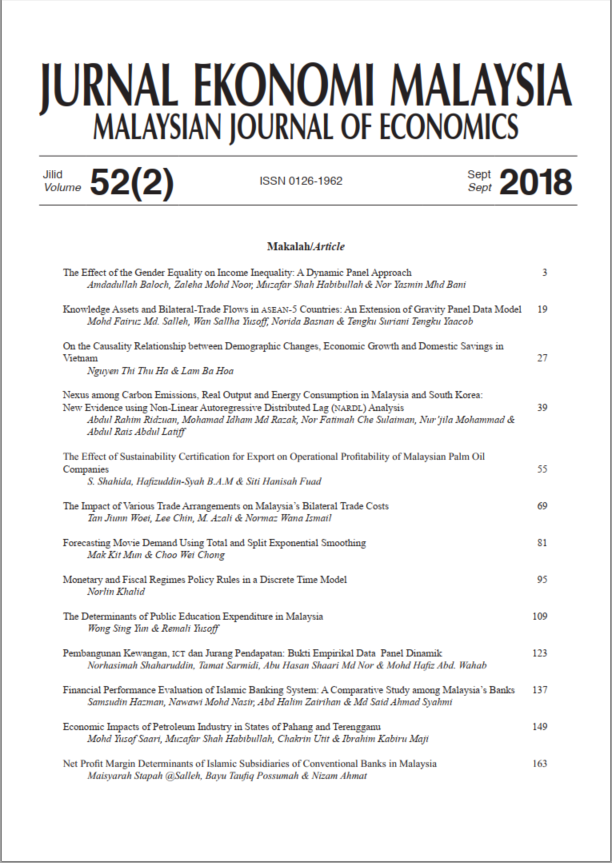Jurnal Ekonomi Malaysia
52 (2) 2018 209 – 217
Faculty of Economics and Management
Universiti Putra Malaysia
43400 Serdang, Selangor
MALAYSIA
Faculty of Economics and Management
Universiti Putra Malaysia
43400 Serdang, Selangor
MALAYSIA
Faculty of Economics and Management
Universiti Putra Malaysia
43400 Serdang, Selangor
MALAYSIA
Abstract
The palm oil refinery industry continued to rise as Malaysia’s key trade, following the nation’s transitional economy in the early 1970s. Known as the workhorse of its industry, palm oil refinery began to boom with the early establishment of refineries in several states throughout east and west Malaysia. However, in recent years, it was reported that the establishment of licensed refineries in the country recorded a rise in numbers, and yet the companies did not step up into the market as planned. The issue of industrial competitiveness was put into question by the decreasing rate of new entrants. In this study, the logit model was adopted to identify entry-related factors in the industry. The prescribed period of study was set between 2005 and 2013, involving 52 firms in operation in the Malaysian palm oil refining industry, where their annual reports were obtained from the Companies Commission of Malaysia (CCM). The empirical results implied that profit, distribution, marketing intensity, coupled with minimum efficient scale and growth were all significant and carried the correct coefficient signs.
Keywords
Similar Articles
- Impak Cukai dan Caj Perkhidmatan terhadap Permintaan Makanan di Restoran
- Kesanggupan Membayar Penambahbaikan Taraf Perkhidmatan Air di Kuala Terengganu
Bibliography
@article{yi2018determinants,
title={Determinants of Entry into Malaysian Palm Oil Refinery Industry},
author={Yi, Choo Sze and radam, alias and Hassan, Azman and shamsudin, mad nasir},
journal={Jurnal Ekonomi Malaysia},
volume={52},
number={2},
pages={209—217},
}
Receive updates when new articles are published.


